The Star People
- Linda Marie
- Oct 29, 2021
- 4 min read

On the far eastern edge of Germany, almost in the Czech Republic, lies the tiny town of Herrnhut. Herrnhut came into existence in the early 1700s, when a newly wed Count and his bride arrived and offered refuge to a small band of believers who had been in hiding in Moravia, persecuted almost to extinction in the name of You-Know-Who by the You-Know-Whats. [I am NOT getting into religion in this blog any more than I am delving into politics!]
And so it was that Nikolaus Ludwig Count Von Zinzendorf and his wife, Erdmuthe Dorothea, became instrumental in the foundation of the Moravian Church, as we call it in America. In Germany, the Protestant free church is known as the Herrnhuter Brüdergemeine (Brethren's Congregation from Herrnhut), which is why no one here has understood our reference to being Moravians, and why we have been unsuccessful in locating a "Moravian Church near me" on Google. But I digress.
It's 1722. The Count welcomed the refugees, and allowed them to set up an encampment along the road between Löbau and Zittau. They called the settlement Herrnhut, for unter die Obhut des Herren "under the care of the Lord" . The refugees were talented craftsmen, and trade flourished. They set up a spiritual community, forming themselves into "choirs" of unmarried men, unmarried women, and widows. Choir houses were built, in which the brothers and sisters (as they called themselves) lived, ate, and carried out their crafts. Education was very important to the Brethren from Herrnhut, and the church has close ties to the teachings of Johann Amos Commenius, the father of modern education, who advocated for universal education - rich and poor, boys and girls. Yes, heresy!!
From Herrnhut, missionaries were sent out (chosen by lot) and other communal settlements were built. Some Brethren travelled to America, and eventually settled the land we know as Old Salem where Ron and I live in North Carolina.
Ron and I are members of Home Moravian Church in Winston-Salem. After many years hearing about Herrnhut, the best time of year to visit, the proper way to pronounce it ("Hair en Hoot" or "Hair en Hut"?), and the story of the Christmas stars that come from Herrnhut, it was finally our turn to make the journey.
I do not use the term journey lightly. Even in the year 2021, it is hard to get to Herrnhut. From Erfurt, it took three trains, a bus, and the better part of a day. This time of year, there is very little tourism. The town is small, and is centered around Zinzendorf Platz, the square formed originally by the church hall, called Saale, the Widow's house, the Single Brothers House, the schools, etc. The Saale is undergoing renovation, but we could still take a peek.
We found several small museums along the street, commemorating the lives of Commenius, and of the Zinzendorf's, and of course, the history of the Brethren of Herrnhut. We found a photo of a 2007 Christmas service in Winston-Salem. Does anyone recognize this church?

No journey to Herrnhut would be complete without a visit to the Star Factory. Herrnhut is known throughout Germany and Europe (some would argue, throughout the world) for the stars manufactured here that have become synonymous with the "Christmas Star". Of course, there is a story. One of the students in the Boys School created a 64 point star in response to a geometry assignment. The star was lit and hung during Advent, and soon more were made.

The missionaries took them with them as they travelled out into the world. By the early 1800's one of the now adult students of the school started a factory to produce the stars, and the rest is history.
Ron and I had an excellent meal of schnitzel and potatoes, wandered through the museum, and sat in a small theatre to watch a loop of photos from all around the world, featuring the Herrnhut Stars at Christmas.

We stayed at the Komensky (German for Commenius) House. It is more of a retreat house than a Bed & Breakfast. Our room was clean and comfortable, if plain.

The Komensky House is usually full, and retreatants/guests arrive by the busload. During our visit, there was only one other guest, and we shared the large dining room for breakfast, each having our own table by a window.

It was a short walk to God's Acre. I had to keep reminding myself we were in Herrnhut, and not Old Salem! A tree-lined path led to an arch with a bible verse, then acres and acres of flat headstones, marking the graves of the Brethren "who have entered the more immediate presence of the Lord" since the first in 1730.
Most of God's Acre is in the tradition of the Brethren's Choir system, married men, married women, unmarried men, unmarried women, children. All are buried in the order of their death, a flat marker indicating the belief that all are equal in the eyes of God.
It was Friday, and at noon a prayer service was held in a small upper room in the Saale. There were two other couples, one from the Netherlands and one visiting from another German town, and a local townswoman. Frau Erdmuthe Dorothea Frank led the prayer service, which began by having everyone introduce themselves. When Frau Frank realized that Ron and I were German-language-impaired, she quickly asked the others if they spoke English, and it was decided to have a hybrid prayer service. It was incredibly moving. We went around the room reading the liturgy. Ron and I read in English, the others in German. The songs were sung in each participant's language of choice. Somehow, it worked. After the service, we visited with Frau Frank and learned she has made several journeys to Winston-Salem. We actually know some of the same people. Small world!
One last stroll through town while waiting for the bus to start our journey home. Yes, Christmas is coming. It is always just around the corner....



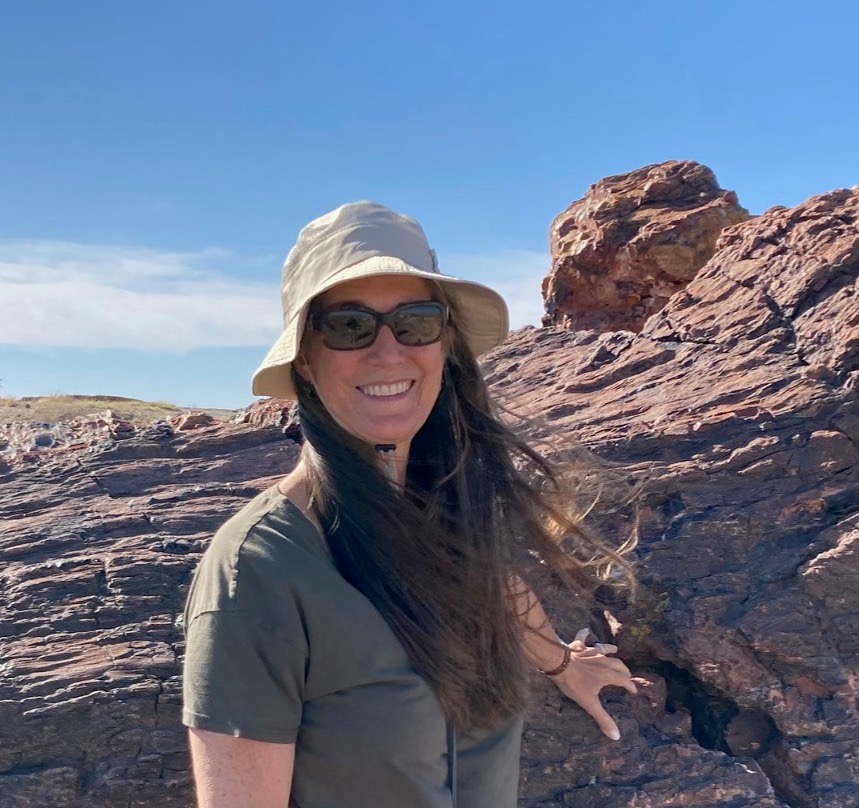



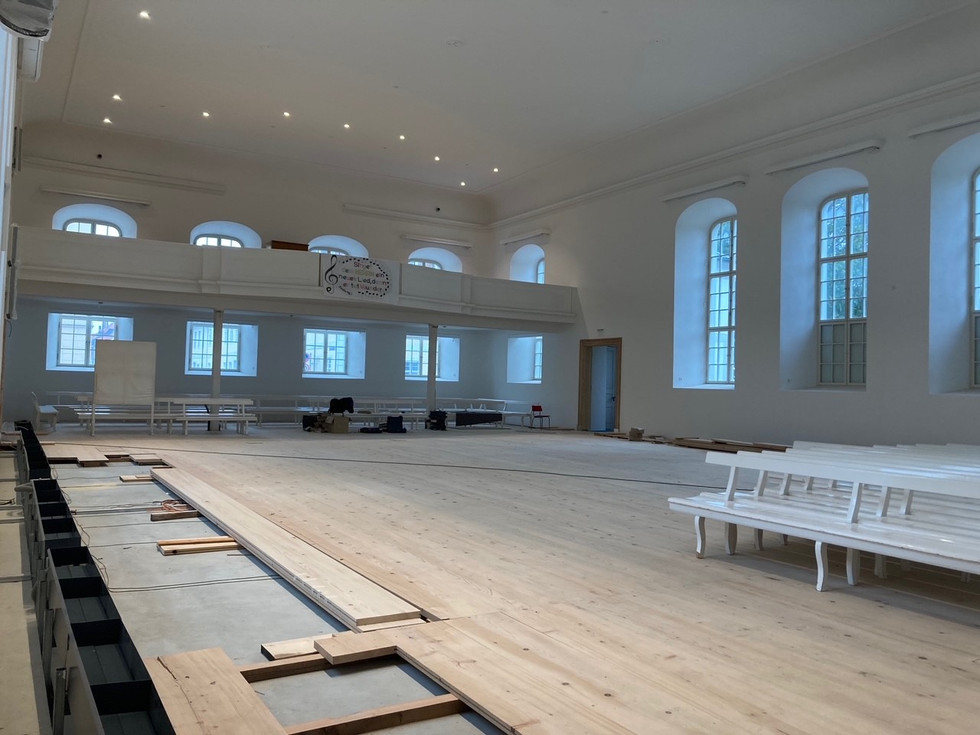









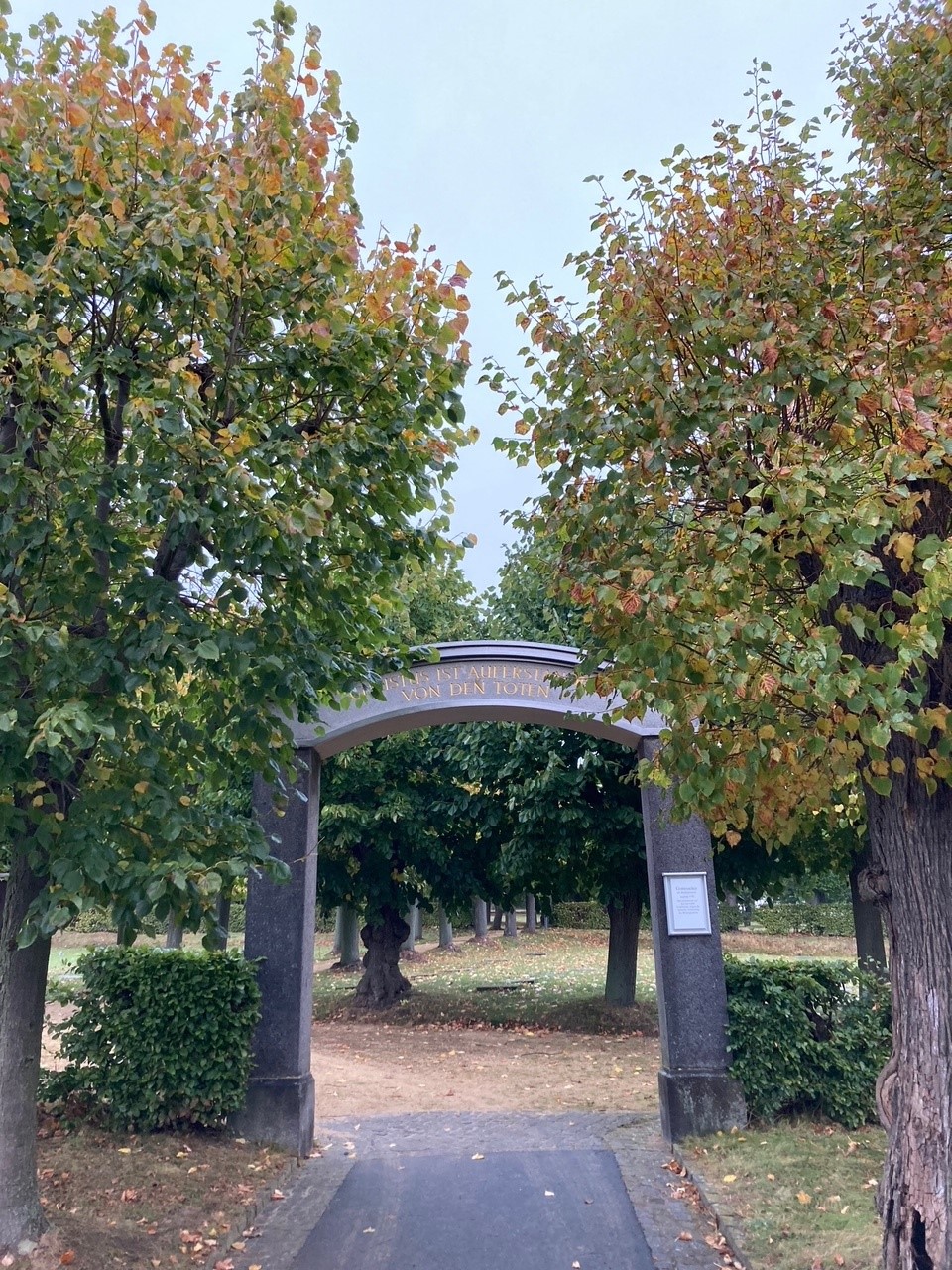









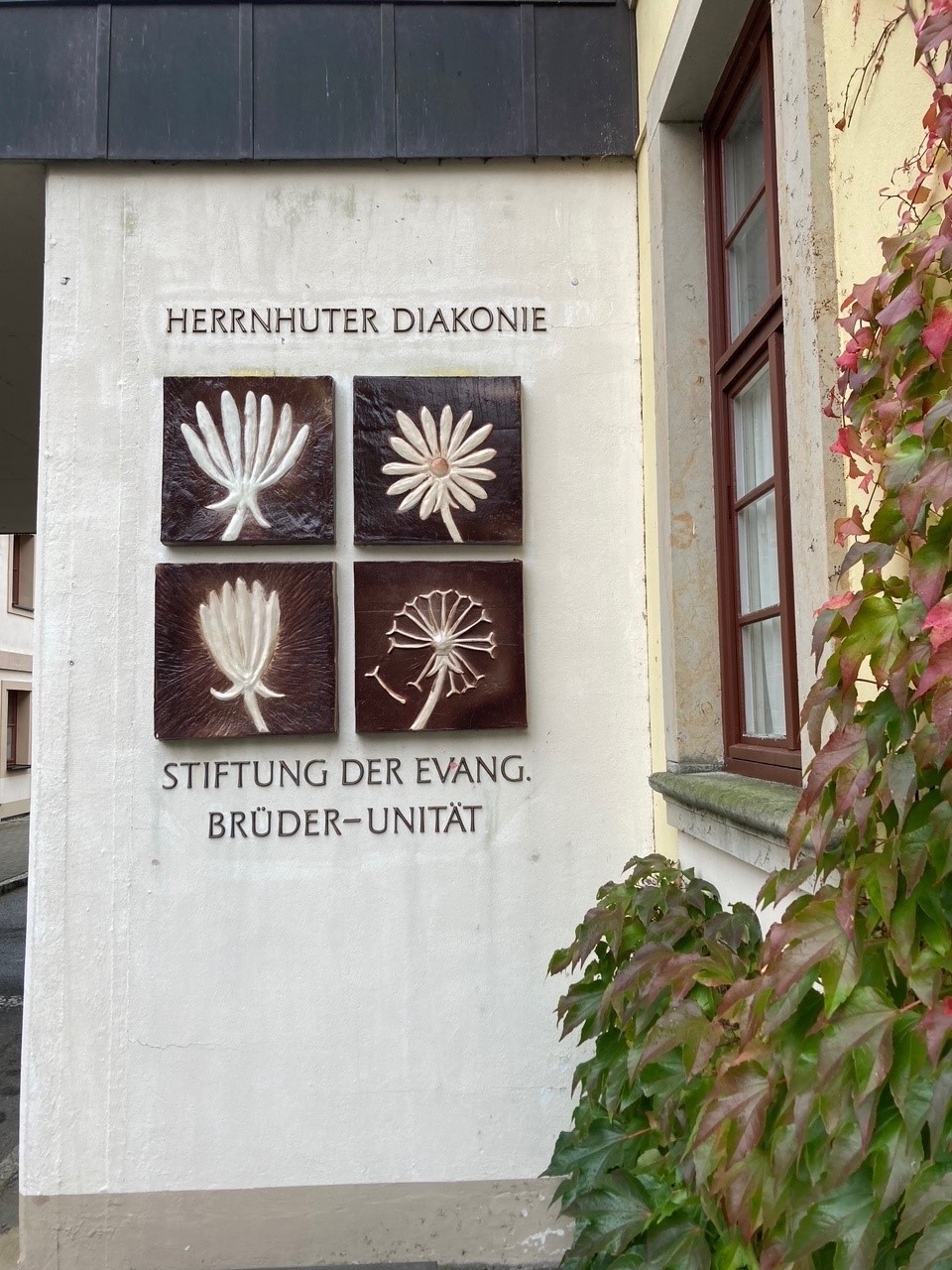









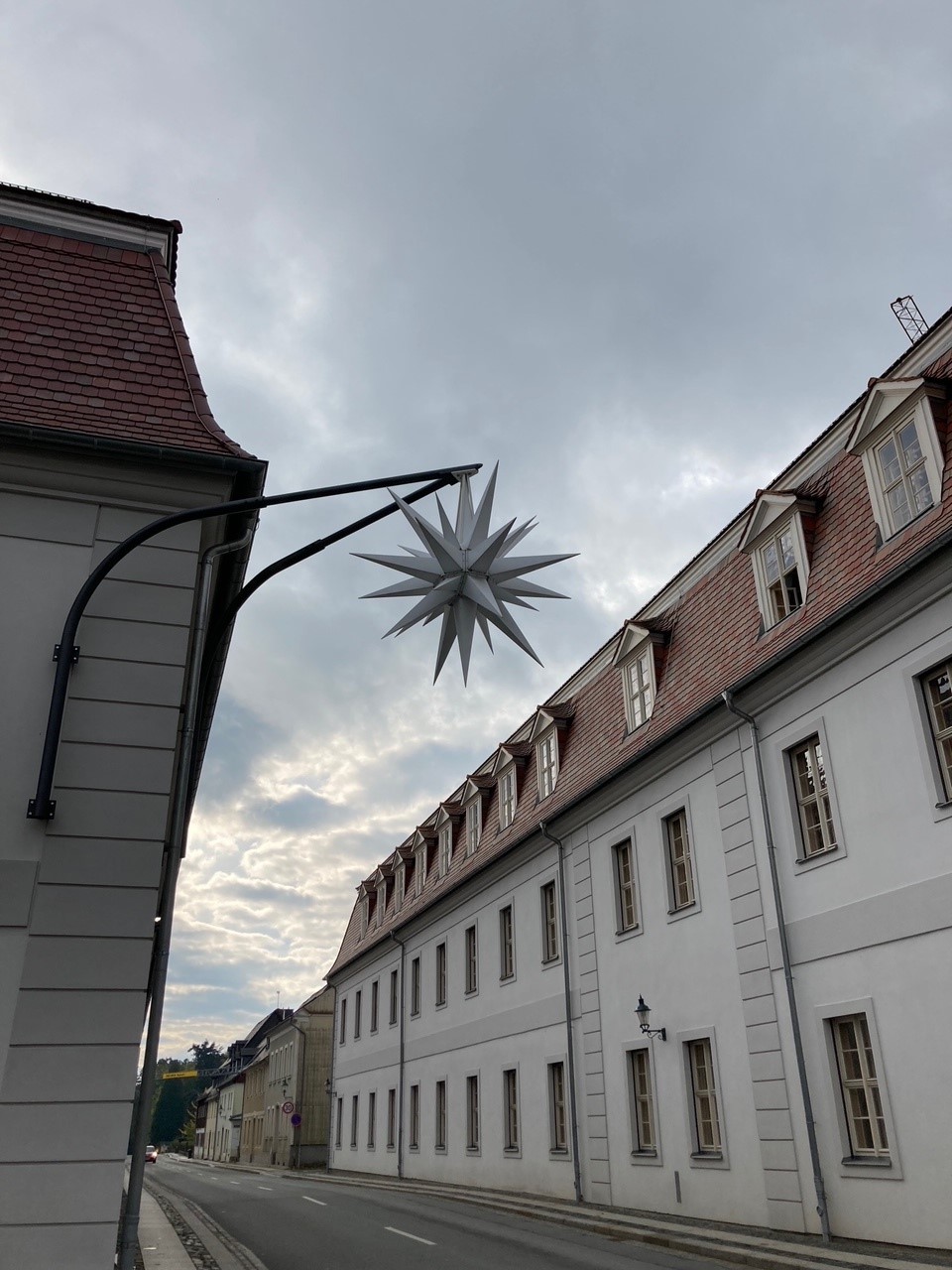



Wonderful photographs. Great visit. Thanks for sharing.